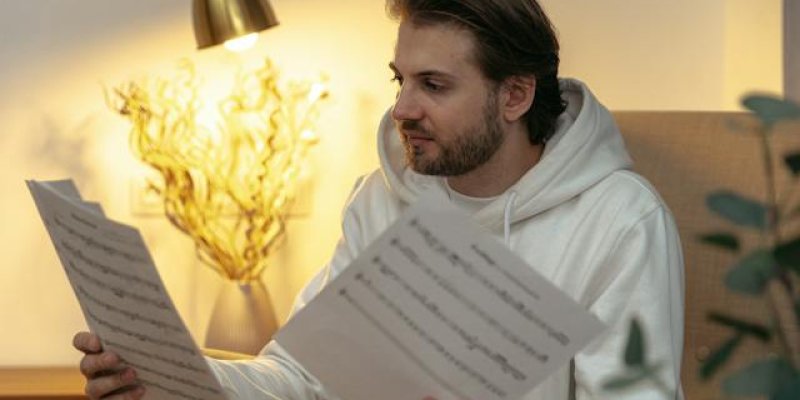
A grace note is a musical notation that indicates the brief insertion of an extra note or notes into a melody.
These additional notes are usually played quickly and are not essential to the main structure of the musical passage. Grace notes are used to add ornamentation, embellishments, or expressiveness to a piece of music.
There are two main types of grace notes:
Acciaccatura (short appoggiatura)
In this type of grace note, the small note is played very quickly and takes up no time from the main note it precedes.
In terms of sheet music, a stroke indicates it through the stem of the note or a small note with a slanting line. The acciaccatura is played almost simultaneously with the main note, creating a quick and sharp effect.
Appoggiatura (long appoggiatura)
Unlike the acciaccatura, the appoggiatura takes some time from the main note it precedes. It is written as a small note with a curved line through the stem.
The appoggiatura is played as a more emphasized and slower ornament, typically taking up half or more of the value of the main note.
Both types of grace notes are used to add expressive and decorative elements to the music, enhancing its emotional impact and providing a stylistic flair to the performance.
Medieval and Renaissance Music (500-1600)
Early Western music saw the use of various ornamental elements, but the specific notation for grace notes as we know them today was not standardized. Musicians often added embellishments to their performances based on oral traditions and stylistic preferences.
Baroque Era (1600-1750)
The Baroque period marked a significant development in the use of ornamentation, including grace notes. Composers, including Johann Sebastian Bach and George Frideric Handel, employed various ornamentation techniques in their compositions.
The notation for grace notes became more standardized during this era, with specific symbols indicating their use.
Classical Era (1750-1820)
The Classical period saw a shift towards simpler and clearer musical forms. While ornamentation, including grace notes, was still present, it became more controlled and integrated into the structure of the music.
Composers like Wolfgang Amadeus Mozart and Ludwig van Beethoven used grace notes judiciously to add expression to their compositions.
Romantic Era (1820-1910)
The Romantic period embraced emotional expression and individual interpretation. Franz Schubert and Frédéric Chopin continued to use grace notes, sometimes exploring more extended and elaborate ornamentation to convey heightened emotions.
20th Century to Present
In the 20th century, various musical styles and genres emerged, each with its own approach to ornamentation. While some genres moved away from traditional
Western classical ornamentation, others, such as jazz and certain forms of popular music, continued to use grace notes and other embellishments creatively.
If you're unsure of where to start, listen to recordings in the genre or style you're working on to hear how experienced musicians incorporate grace notes.
Analyzing how professionals use these embellishments can provide valuable insights and inspiration. They can be added to the instrumentation in your song or to a vocal line, or both!
Modern music often allows for more flexibility in timing and rhythm. Experiment with the timing of your grace notes to create unique and interesting rhythmic patterns. Syncopated or offbeat grace notes can add a modern and dynamic feel.
It's also a great idea to integrate grace notes with other playing techniques like slides, bends, or hammer-ons/pull-offs. Combining these techniques can create a more intricate and expressive musical vocabulary.
When it comes to choosing when to add a grace note, think about the musical context, the emotional intent of the song, and the song section you're working on.
Grace notes can convey various emotions, from playfulness to melancholy. Adjust the type and execution of grace notes based on the overall mood of the piece.
Explore both acciaccaturas (short appoggiaturas) and appoggiaturas (long appoggiaturas). The choice between the two can depend on the mood of the music and the desired effect.
Acciaccaturas add a quick and sharp touch, while appoggiaturas create a more pronounced and sustained embellishment.
And finally, you don't want to go too crazy with the grace notes by adding them everywhere once you've discovered their magic. While grace notes are meant to be ornamental, ensure that they do not overshadow the main melody or become distracting.

As a session singer, writer, and producer that has worked with over 300 clients to provide high-quality jingles, singles, and features, Yona spends her time creating and marketing new music and helpful resources for creators. Check out Yona’s latest releases on her Spotify, her Youtube and share if you like it!
If you are in need of singer, songwriter or song producer services, see what Yona Marie can offer you on her services page.